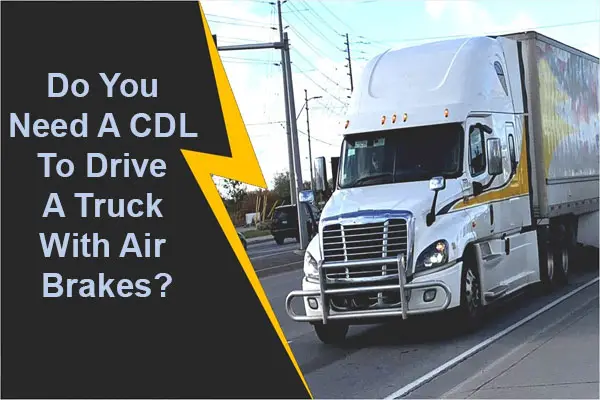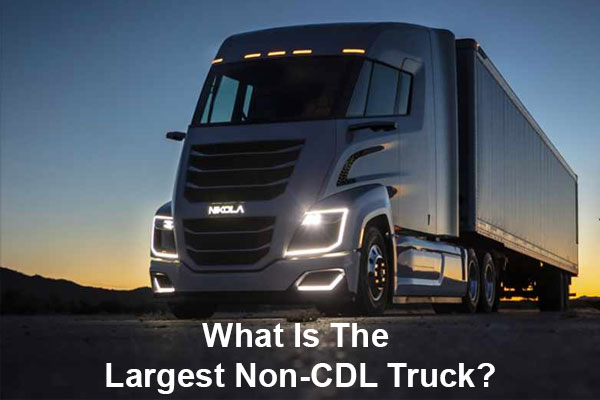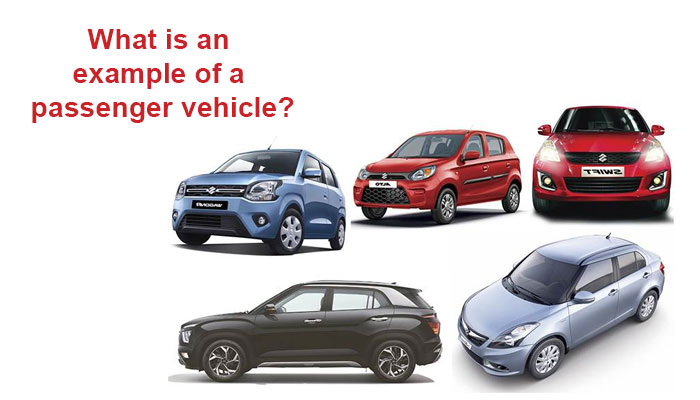Do you need a CDL to drive a truck with air brakes?
- By Infoik
- 03 Dec, 2021

Do you need a CDL to drive a truck with air brakes?
Does your car have an air brake? If so, that’s great! You don’t need a CDL. For some reason only applies to commercial drivers – but not if you’re driving around in an F750 with 26000 lbs gross weight or less on it because there’s no requirement for this license at all when appropriately equipped and operable according to top-speed limitations set forth by law (as long as the driver has received training).
Is a CDL important for compressed air brakes?

There is no CDL required for an air brake. You don’t have to get approval from the government, and if you do, they’ll only be checking that your hydraulic brakes meet specific standards, so nothing is stopping you!
An F750 equipped with compressed air brake systems can operate legally without any licenses or permits at all – as long as it weighs less than 26000 lbs (118kg).
Can a C-class driver include driving a truck with an air brake?
ENDORSEMENT FOR Air brakes are not a recommendation; they’re part of the knowledge tests you have to pass. If your license is limited without an air brake and you don’t plan on taking lessons with one in training or practicing before hand-in, which would give them more time behind the wheel-you’ll be wasting money if something were ever wrong while driving!
The truck must meet this requirement: total weight less than 26001kg.
Do you also require to be certified to work with compressed air brakes?
Drivers who need to utilize the safety features of a compressed air brake must complete special training and get certified. A commercial driver’s license is all that’s required for this type. Still, drivers can also seek Air Brake Certification, which takes place through an additional licensing process known as becoming “state-enabled.”
The following passage details how someone obtains their driving license to make use of these pneumatic assistance devices: “Drivers who drive vehicles with air brakes such as those powered by pistons or disks may obtain State Certification under federal regulations governing intercity bus operations” (Commercial Motor Vehicles Safety Act).
Do you require CDL for PA compressed air brakes?
To drive cars provided with an air brake in Pennsylvania, you must pass a particular exam called the CDL. This license grants drivers access to specific roads and privileges from law enforcement agencies across America!
Which truck can you drive without CDL?

There is hope for those looking for job offers but don’t have the required SPECIAL license. You can drive as long and far with just one more thing- an overweight permit!
A CDL (commercial driver license) may not be necessary when driving smaller vans under 26 feet in size if they weigh less than 26000 pounds gross vehicle weight rating or get towed by another truck that weights over 10% more than your pulling capacity, so check before going out on public roads alone…
How many passengers can you drive without CDL?
The explanation is, it depends. To drive a vehicle with higher than 15 passengers in the United States of America (USA), you must have either: A Commercial Motor Vehicles Driver’s License (CDL); or An International Driving Permit that fulfills all classes and exercises necessary to obtain one from your country’s automobile association(s).
Can you drive a 12-seater van with a standard driving license?
The American tourist is always on the go, and with 12 cars to choose from in total, they can pick up any vehicle that meets their needs. The only thing you need before renting one of these popular rental companies’ vehicles is a valid passport or driver’s license (and possibly car insurance), but not both if it was issued by another country as well!
Can I drive a 15-seater van with a C license?
If you have a class C driving license, you can operate regular buses with 24 seats or vans containing 15 passengers. You could also take control of cars having D licenses and F-G Types Of Vehicles in their repertoire; however, there are some restrictions on which types of heavy vehicles can be driven by someone who only has an ordinary car classification certificate without any additional endorsements under his belt. Yet!
How do I add Speedbrakes to the CDL?
You will be pleased you got the time to apply for pneumatic brake approval from your local registry! When you do so, it’s included with written exam fees, and there is no additional cost. Most states even offer a discount on this service because they know how vital safety equipment like air brakes are in ensuring businesses stay open long term – which means more jobs and revenue coming back into their communities as well.
Can I take a trailer with a C license with me?
No car, truck, or RV can indeed be towing vehicles more than any vehicle without the appropriate permit. With a Class A non-commercial license: any class C trailer weighing 10k lbs or less will also be able to participate in this fun activity!
Is it possible to get a Class A CDL without compressed air brakes?
The MA holder did not pass the pneumatic brake part of their CDL test or used a VMC without compressed air brakes for the proficiency exam.
It’s important to know that this is only an issue on Class A and B vehicles, which means it can’t stop you from getting your commercial license!
Does class A cover CDL compressed air brakes?
You can’t see anything in the gauge. So you need to make sure that there is nothing under the air brake sockets before you put a triple trailer on or load any other large object onto your vehicle’s roof rack!
How do I get CDL B in PA?
The Pennsylvania Driver’s License Center is great to get your Class B license. You can visit them, complete an application and take some Additional tests if needed!
How much makes it cost to get a CDL in PA?
The Pennsylvania standard CDL license costs $ 74.50 and is valid for four years, but drivers can get a two-year driver’s license that will be cheaper at only 44 dollars! In addition, a Hazmat card in PA requires you to take an exam which has significantly increased the cost over other states – so make sure your Checklist includes these additional fees before applying.
Do You Require A CDL To Drive A Box Truck Of Any Size And Weight?
Box trucks are a dime-a-dozen in the United States. They come in two different flavors – CDL and non-CDL licenses, which we’ll discuss here!
If your company ship goods around the nation or overseas, then there’s no better way than renting out an affordable box truck for your business’ needs; especially if they’re lighter than 26000 pounds due to its GVWRs below that lightweight vehicles limit across most countries, including Canada where this privilege applies.
What Is The Largest Non-CDL Truck?

You are looking for more information about how big a truck you can operate without a CDL? Trucks identical Gallon Chip Seal Tank vehicles and Ford 650 are the largest, most commonly used non-CDL trucks. While it mainly depends on what state you’re in, if the Department Of Transportation does not license you, then chances are that as long as those limits don’t apply to any other federal code such as 26000 pounds max weight limit with 10k lbs maximum tow capacity.
Non-CDL drivers usually transport within city limits, but sometimes their routes take them further away from home, which requires extra fuel supplies during longer trips, so they may end up driving over 300 miles per day!
Do You Require A CDL For A Truck Under 26,000 Lbs With Air Brakes?
You may not need a CDL or air brake PERMISSIONS if your truck weighs under 26,000 pounds. These licenses and permissions only apply to drivers with Commercial Motor Vehicles’ support, extending from the Department of Transportation.
What Is A Non-CDL Driver?
You’ve probably heard the saying “Herd immunity” before, which means that if enough members of a population are exposed to an infection, it won’t spread. In this case, we need only look at how many people drive trucks for automatic transmission purposes; when one individual spreads his virus out amongst all these other drivers, there isn’t much chance left because he will quickly come across another person who doesn’t share those same beliefs as him. So their virulent gene gets extinguished before ever being able to evolve into something worse than just simply sick!
Do you require a CDL to drive a truck with air brakes for a business?
A chauffeurs license is not the same as a CDL. For example, a person with one can drive an automobile, but they would require air brakes and may not have all of the necessary endorsements for the type of truck they are operating to make certain decisions while onboard (e.g., how fast or where you should be driving).
FAQ:
Do you require a CDL to drive an RV with air brakes?
If you see a larger RV, it is essential to consider the type of license needed. For example, if your chosen vehicle weighs over 26000 lbs and will be used primarily on roads with air brakes that require CDL, drivers in most states-you likely need one too.
Is a CDL required for air brakes?
For some bizarre reason, an air brake endorsement only applies to CDL drivers – an F750 equipped with air brakes and grossing at 26000 lbs or less does not require any additional air brake permissions.
What Is The Largest Truck You Can Drive Without A CDL – Non-CDL Trucks?
Air brake restrictions are only applicable to CDL drivers, which is why you should always have them in mind when driving.
Do You Require a CDL License for Trucks With Air Brakes in North Carolina?
The standards for driving a different type of vehicle are stringent. If you don’t meet these requirements, then it is likely that you’re not going to be able smoothly to operate any car or truck on the road today!
What Is The Largest Truck You Can Drive Without A CDL – Non-CDL Trucks?
Class C CDL drivers are able to carry up to 16 or more passengers. They also have the authority and certification necessary for transporting hazardous materials, so they’re in high demand these days!
What are Class A combination vehicles?
To drive any combination of vehicles that weighs 26,001 pounds or more as a whole, if your gross vehicle weight rating is 10k+, then you must hold or exceed Class A license.
What does a combination weight rating mean?
When towing a vehicle and trailer, you must understand the combination weight rating. The total weight should not exceed what is rated for your tow truck, or things could go wrong!
Do I need a CDL to pull a gooseneck trailer?
Federal law requires that a Commercial Driver’s License is needed for many types of gooseneck trailers to tow more than 10,000 pounds and have two or more axles. Luckily you don’t need this license if your trailer only has one setback axle as long it weighs at least 5 tons!
Do you require a CDL to drive a school bus?
As of October 1, 2015, all bus drivers in the state must obtain a Commercial Vehicle Driver’s License. The CDL is required for any driver who operates buses with 16 or more passengers and those transporting empty school bus endorsement through public highways.
What is an example of a passenger vehicle?

A car is a type of vehicle that can carry up to 10 people, and these regulations cover just about all kinds. For example, passenger cars, motorcycles with more than three wheels but not designed as Toyotas (like scooters), multipurpose passenger vehicles like school buses or trucks which have four seats for passengers plus an additional driver’s seat on duty -these are called commercial motor vehicles by law, and even trailers!
What does a license holder mean?
A “license holder” is a person who holds department-issued licenses as a manufacturer, retailer, or installer.
What do you mean by single-vehicle crashes?
A single-vehicle collision is when a car collides with no other vehicle. They usually have similar root causes as head-on crashes. Still, because there was just one vehicle in their path and not two or more cars side by side at the time of impact, they are different from typical intersection collisions.
Do you need a CDL for a 15 passenger van?
A 15-passenger van is convenient, but it’s not necessarily a minivan. Experience: Fifteen Passenger Vans should only be driven by experienced drivers who have licenses and operate this type on occasion or regularly license. They are ideal. Due to their size, these large passenger vans may require special attention in traffic situations, so if you’re new, don’t take one without asking first!
You Can Also Read This Article About Student Driver Signs Illegal Or Not
Conclusion:
If you’re not a commercial driver and don’t need your CDL, this information probably doesn’t apply to you. However, if you are in the store for a car with an air brake, it may be worth considering because there is no requirement for a CDL when driving certain vehicles under 26000 lbs gross weight.













